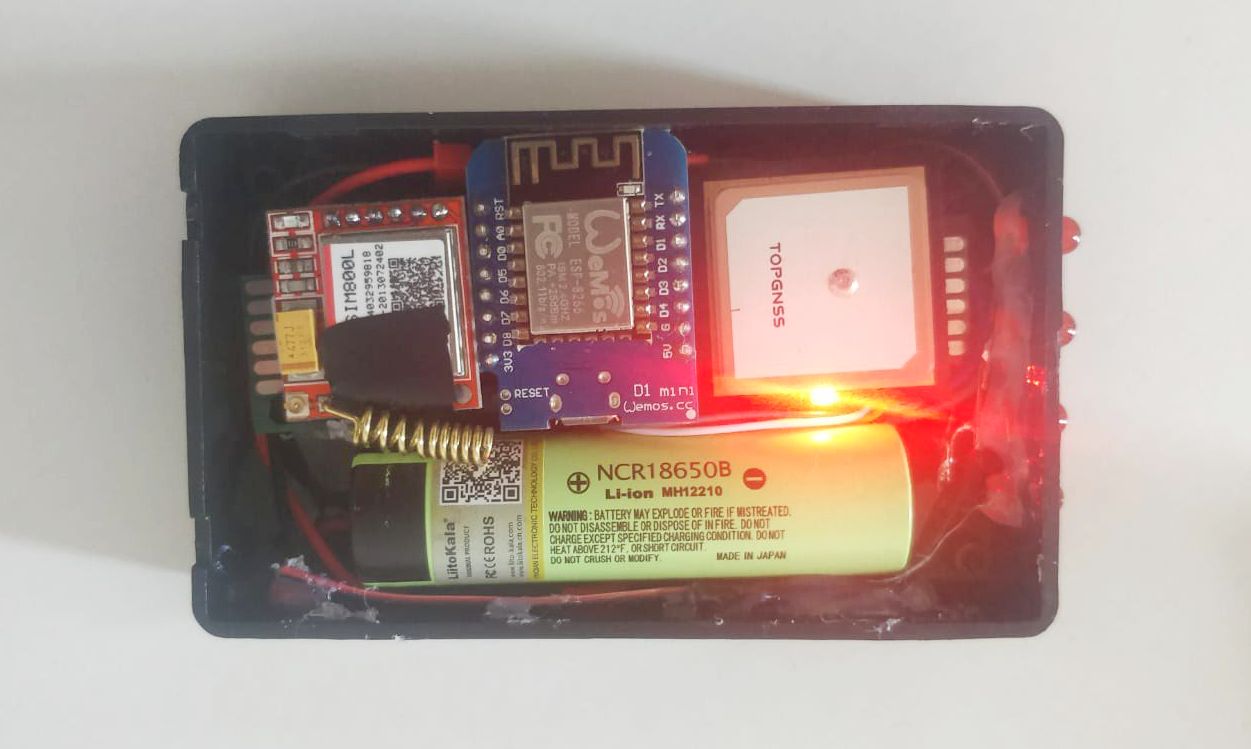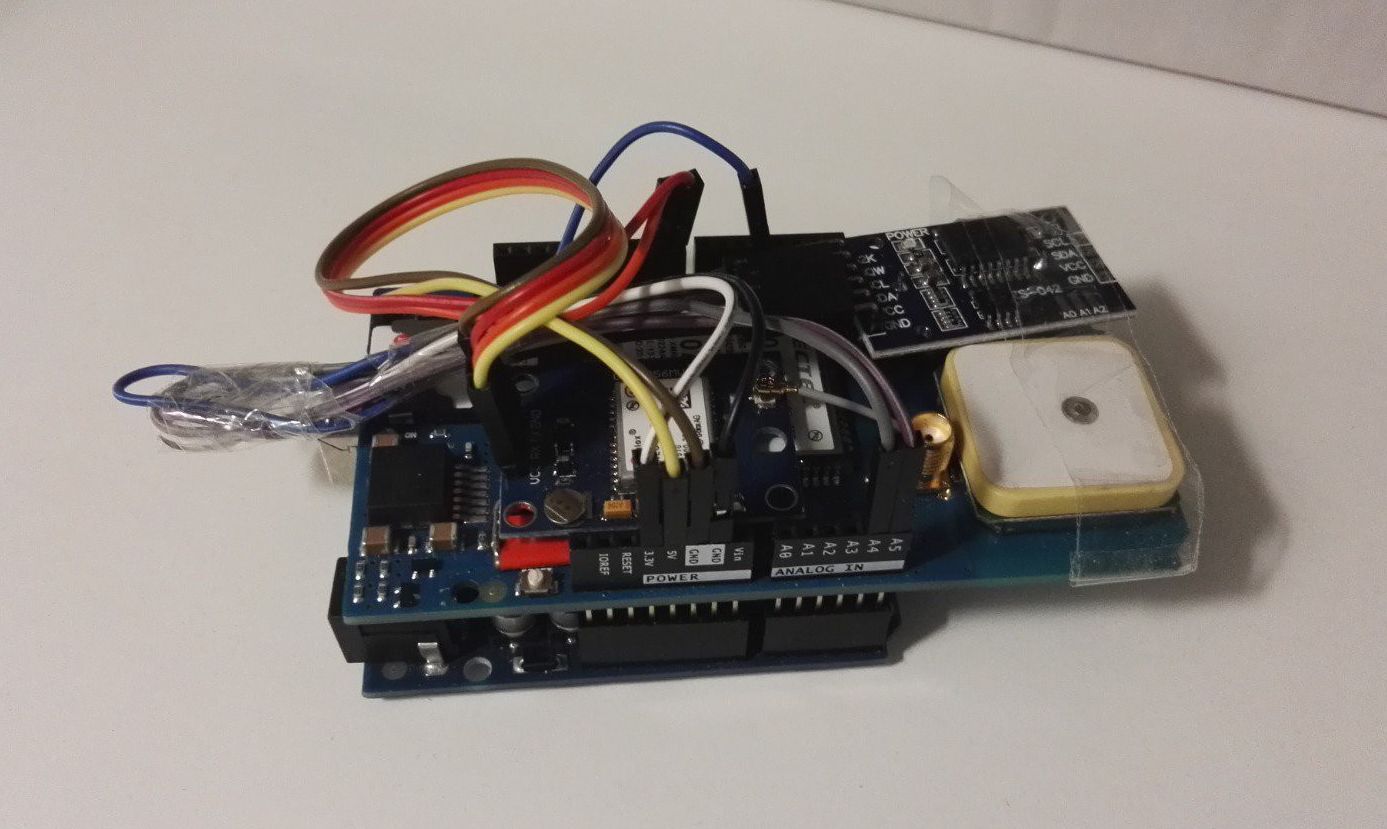Tracking a stolen bike using the NB-IoT protocol

The Internet of Things penetrates everywhere, even into bicycles. You can make a small tracker with the support of the NB-IoT protocol with your own hands. At any time, this gadget will respond to your request via the Internet and report the GPS coordinates of the bike. And best of all, this tracker works for a year on a single battery. And this is not the limit: other NB-IoT sensors can work up to ten years on a single charge. Low power consumption is the main advantage of the NB-IoT bike tracker over standard GSM / GPS solutions. Our device spends most of the time in sleep mode and consumes a minimum of energy.
The NB-IoT standard provides for switching between cellular stations. Theoretically, the tracker will send you data from almost anywhere in the world (where NB-IoT networks are deployed), so the attacker will not be able to hide. The main thing is to successfully hide the tracker on a bicycle so that the thief does not turn it off.
Instructions for assembling a device called BikePin are published on Hackaday.io.
')
NB-IoT protocol
To begin with, let us say a few words about the NB-IoT (Narrow Band Internet of Things) protocol, which in the future will probably receive very wide application. This is a cellular standard for low-volume telemetry devices. Developed by the 3GPP consortium, the first working version of the specification was presented in June 2016. The NB-IoT network can be deployed either on LTE cellular network equipment, or separately, including over GSM. Hundreds of thousands of NB-IoT devices can connect to one base station.
The NB-IoT standard promises a real revolution in the Internet of Things. With its help various devices will be connected to cellular networks:
- security alarms;
- industrial sensors;
- resource consumption counters;
- smart home devices;
- medical devices.
And such bicycle GPS trackers too.
For better implementation of the NB-IoT, the GSMA consortium in 2016 adopted the Embedded SIM (eSIM) embedded SIM card specification, which allows integrating SIM card functionality into modem electronics, as well as the optional Remote SIM Provisioning (RSP) standard, which describes the infrastructure and interaction algorithms trusted centers for the issuance of SIM parameters, the cellular operator and the consumer of communication services.
According to forecasts, by 2025, around 75 billion NB-IoT devices are expected in the world.
Will the NB-IoT bike tracker work in Russia?
Yes, it will.
All major telecom operators in Russia have been testing the technology for two years already, and at the end of 2018, MTS was the first to cover all Russian megacities with the NB-IoT network .
The network is supported by most LTE base stations. However, other operators are not lagging behind: in October-November 2018, the launch of the networks was announced by Megafon and VimpelCom . Moreover, the Beeline network supports two competing Internet of Things standards at once - NB-IoT and “American” LTE Cat-M.

To connect SIM-cards using the NB-IoT protocol, operators offer special rates: from 150 rubles. per year with a traffic limit of 1 MB. For our tracker, this is quite enough. Although the mandatory receipt of a SIM card and a paid subscription are, of course, a drawback of NB-IoT.
SIM cards are available in three types: a regular NB-IoT SIM card, a thermo SIM card that ensures stable operation of a smart device in extreme climatic conditions, and a SIM chip for miniature devices.
BikePin Tracker
BikePin runs on an Atmega328 processor, a GPS module is installed on the board to get coordinates at the user's request, an NB-IoT module and a real-time clock (RPC).

Component List
- Arduino Mini Pro (ATmega328)
- SIM7000 (NB-IoT module)
- GN-801 (GPS module)
- Li-Ion 1000 mAh battery
- Wemos D1 mini board
The module is able to receive signals and respond to commands at a distance of 10−15 km from the base station.
Developer Marin Vukosav (Marin Vukosav) posted on Github the source code of an application for remotely controlling the gadget via the Internet, taking testimony and keeping track of history.


The tracker works under the Message Queuing Telemetry Transport (MQTT) protocol, the device sends data only in response to a received request.
So far, BikePin is at the concept stage. The dimensions of the Wemos D1 mini board do not allow to hide it normally. Marin Vukosav says that, ideally, I would like to disguise the device under the rear light, which is mounted under the seat, or in the gear selector on the steering wheel. But for this you need to reduce the size.
According to the author, commercial companies in the future may start mass production of such devices. Then they will become more miniature. Perhaps, bicycle manufacturers even begin to install them in the normal manner. For example, inside the frame.
In principle, such a tracker is suitable not only for bicycles, but also for tracking pets or children. For example, for a dog collar or a children's bracelet. NB-IoT support can be deployed in drones. A self-powered module will show the location of the drone, even if it crashed or the battery has run out.
If the tracker works for a year on a single battery, then it is very convenient. It remains to wait for the sale of inexpensive components to miniaturize this concept.
Source: https://habr.com/ru/post/453938/
All Articles